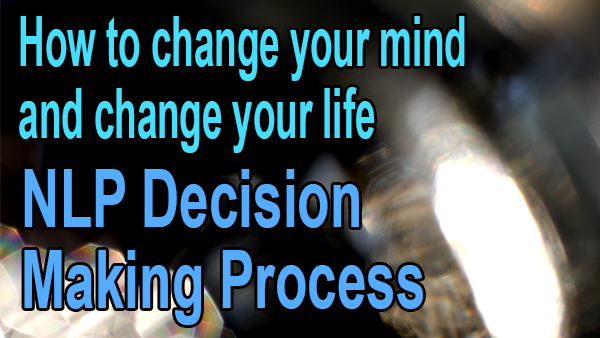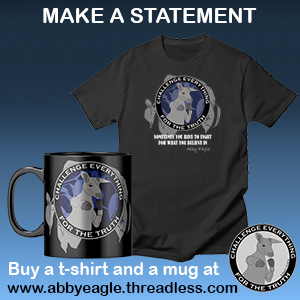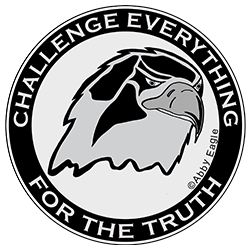
Phone Abby Eagle on 07 5562 5718 or send an email to book a free 20 minute telephone or Skype consultation. Learn the Neuro Linguistic Programming (NLP) procedure of mapping out the steps of a strategy - that is, the mental process / procedure that you run in the back of your mind in making a decision to take action on a behaviour. It is important to understand strategies if you want to eliminate bad habits and addictive behaviours such as over eating, cigarettes, marijuana, drugs, alcohol, gambling - deal with fear, anxiety and anger - and make better decisions in every area of your personal life, business and relationships. NLP Coaching and Hypnotherapy, Gold Coast... Online coaching available on Skype.
Use NLP to Stop Bad Habits and Addictive Behaviour by Mapping out Your Decision Making Strategy
By Abby Eagle (2018)
Click the Image to Watch on YouTube
In this article we are going to explore how you make a decision? Have you ever thought about that? How do you know what to eat? How do you know when to eat? How do you know when it is time to go to bed? How do you decide who to date and form a relationship with? How do you decide on who to vote for? How do you decide if you should vote or not? How do you decide who is the good guy and who is the bad guy?
In NLP terms we talk about decision making as a strategy. Bandler and Grinder based the NLP strategy model on the work of Miller, Galanter, and Pribram. They developed the TOTE model which is an acronym for test, operate, test and exit.
So something kicks off the strategy. Something that is in your external environment or in your body or mind. This is the first test bit. You then go through an operational phase and at various stages testing to see if you have made a decision or not. And then you exit. Test, operate, test, exit. Let’s see how it works in practice.
So for example let’s start with decisions around food. At some time in the day you feel a sensation or number of sensations in your body that causes thoughts of food to arise in the mind. The thought then arises, “I need to eat”. This is the first test.
So now there are two directions of attention. One is on the outside world and the other is on the inner world. We have five senses. Visual, auditory, kinesthetic, olfactory and gustatory. That is, what you can see in the outside world and the images that have in the cinema of your mind. What you hear out there in the world, sounds and conversations with people.
And then the conversations you have with yourself in your inner world. And in terms of the kinesthetic system what you can touch and feel out there in the world and body sensations, feelings and emotions on the inside. What you can smell and thoughts of smells. And taste. The taste of food and the thoughts of taste
So thoughts arise about hunger and food and you say to yourself, “I am hungry. Time to eat.” You are now motivated to search for food.
I am going to try and keep this discussion as simple as I can so I will give you my eating strategy. Let’s say I am at a meetup with my friends on Saturday morning. At some point I get a sensation that tells me that I am getting hungry. So I check my watch. I like to eat lunch about 12 to 12.30. Let’s say it is 11:45am. So I start thinking about my lunch options. Did I bring lunch with me? Where is the closest café? I mention lunch to my friends.
We decide to meet at a café at the local shopping mall. In my mind I am thinking of what type of café will sell food that fits my criteria for lunch. I know of a suitable café at the shopping mall so that is okay. So that is the when and where.
Okay so now I am at the café. How to decide what to eat? There is a sensation in the body which suggests, either vegetarian, meet or fruit. I compare these sensations with previous memories of having these same sensations and the decision that I made. So I reflect back upon foods that I have eaten before at this time of day. I consider how I might feel after eating the food.
Carbs at lunch will make me tired. Fruit does not give me enough energy and it will affect my gums in a negative way. A small quantity of meat or fish is the best option. So I decide to buy a beef pie. Buying take away food is never going to be perfect but I look for a café which should have a reasonable quality pie. Everything I just described was internal in pictures, having auditory conversations with myself, feeling body sensations, and memories of smells and aromas.
Then I turn my attention to the outside world and I scan the range of pies in the display cabinet. This is visual external. There is chicken pie. I remember past experiences of having eaten chicken pie. No, it does not give me energy and it is too full of additives. I don’t eat bacon and sometimes have a problem with cheese. Steak and kidney is usually the best. The kidney gives me a lot more strength than a basic meat pie.
The waiter asks me if I want tomato sauce. I say no. From past experience there are too many additives which cause me health problems and I have a long list of foods and additives which I need to avoid. The waiters asks, “eat here or take away”. If I say, “eat here”, they will put the pie on a plate so then I have to eat with a knife and fork. That does not interest me. I say, “take away”. Then I get the pie in a paper bag. This feels good to me. I get to feel the softness, texture and heat of the pie. As I bring the pie to my face I can feel the warmth of the pie and smell the aroma.
So in this part of the strategy I was going external and internal. Visual external followed by visual internal. Asking questions of the waiter. Listening for a response. Processing the response internally by talking to myself, checking my criteria and feeling it out. So once I have run through my checklist of criteria and values I make a decision to order the steak and kidney pie and I exit the strategy.
The problem with teaching strategies is how to make it simple for you to understand. So let’s try again. Some clients I have worked with have a simple visual kinesthetic strategy for food. They see a cream pie and they feel like eating. They reach out and pick up the pie and they eat the pie. It is just a VK strategy – that is a see feel strategy.
This person’s decision making strategy is much simpler than mine. It is not a question of which strategy is right – it is about functionality – do your decision making strategies serve you? If not then map out the strategy that you are using and start inserting steps which will help you to make better choices.
Okay we just looked at a generalised description of the decision strategy. Now let’s unpack the decision process a bit more. So within the operational phase of the Test Operate Test Exit strategy you will be making reference to criteria and values. I think of values as being principles that guide us and criteria as less abstract than values and more like standards or conditions.
So continuing with our decision making strategy for deciding upon what to eat. What values and criteria guide your decision making process? Do you like to buy fast food? Is convenience important? Price? What qualities do you look for? Does it need to be organic? Etc. What are your highest frames of mind? What are your highest values in terms of nutrition? Are you a vegan, a vegetarian, or a meat eater. Do you have religious restrictions on what you can eat?
So what I suggest you do is to map out your decision making process for nutrition. Start by eliciting your values around nutrition and food.
1. What is important to you about the food that you eat? You could also ask, what is important to you about diet and what is important to you about nutrition? So you keep on asking these questions – until you get a list of values. Then rank the list in order of importance so that you get a hierarchy of values. If you need more help with values elicitation then take a look at my videos on that topic.
2. It is a good idea to make sure that you have your away-from values – so ask what is important for you to avoid in terms of nutrition, diet and food? Keep asking this question until you get a list of away-from values and then rank the away-from values in order of importance.
3. Once you have your list of towards and away-from values then map out the process that you use to decide upon what to eat for breakfast, lunch, dinner, snacks, etc. Start with breakfast. Use the TOTE model. How do you make the decision to eat or not eat breakfast. What kicks off the strategy?
Remember your attention will go internal and external in VAKOG – that is visual, auditory, kinesthetic, olfactory and gustatory. And you will be referencing values, criteria, memories. You may be thinking in terms of a negative compelling future and a positive compelling future. You may be thinking of benefits and/or consequences.
You may be past, present or future oriented? You may be sorting by self or other. You may be thinking more in terms of facts and logic or more in terms of feelings. For more information about NLP Meta Programs and personality traits see my videos on those topics.
Okay so once you have got an understanding of how you make a decision on what to eat then start looking at how you make decisions in terms of alcohol and drugs. If you don’t do alcohol and drugs then look at how you could apply the same strategy to some food items.
And how do you decide upon health care? Do you go mainstream or do you choose something more traditional like Naturopathy or Ayurvedic or a combination? So how do you make those decisions? What guides those decision making processes? And most importantly does it serve you? If not, then look at your decision making process and make the change at the point which will bring about the desired change as efficiently as possible. This is something that NLP is renowned for. Fast, ecological lasting change. You just need to know where to make the change.
So once you have got an understanding of how you make decisions regarding food, alcohol and drugs – then you move onto relationships. How do you make a decision on who you want to date? Who you want to spend time with? Make sure you write it down. This is an important step to self coaching. Write it down. In this way you get to look at yourself as-if you are looking at someone else.
And then we get to politics. How do you make a decision on political preference? Are you on the left – are you on the right? Are you in the centre? Are you authoritarian or libertarian? As you gain an understanding of personality traits, meta programs, values and decision making processes – you will gain self awareness – which will help you to make better decisions – not just for yourself but for the entire world.
And to finish this article I want to leave you with a question - how do you decide who is the good guy and who is the bad guy? Leave your comments and thoughts in the comments section below. And If you are looking for an NLP Coach then feel free to contact myself – Abby Eagle using the contact form - top right of this page.
Share With Friends
| DISCUSSION GROUPS | |
|---|---|
 |
|
| NLP Future Selfing | |
| NLP, Hypnotherapy & Meditation | |
| NLP Peace Mapping | |
| Facebook Discussion Group | |
| The secret of high achievers |
|---|
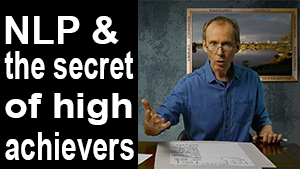 |
| How to build a powerful team |
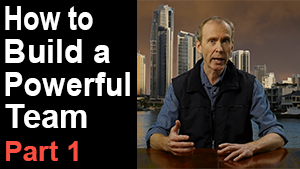 |
| Learn the NLP Meta Model |
 |
| How I stopped drinking alcohol. |
 |
| How to coach yourself using NLP. |
 |


